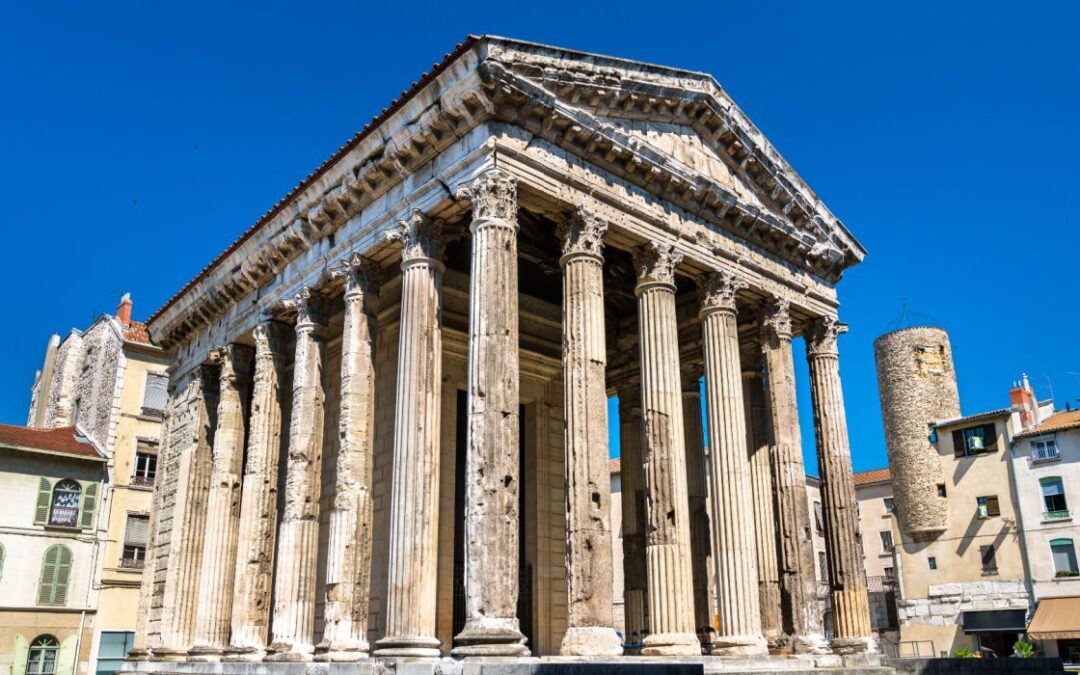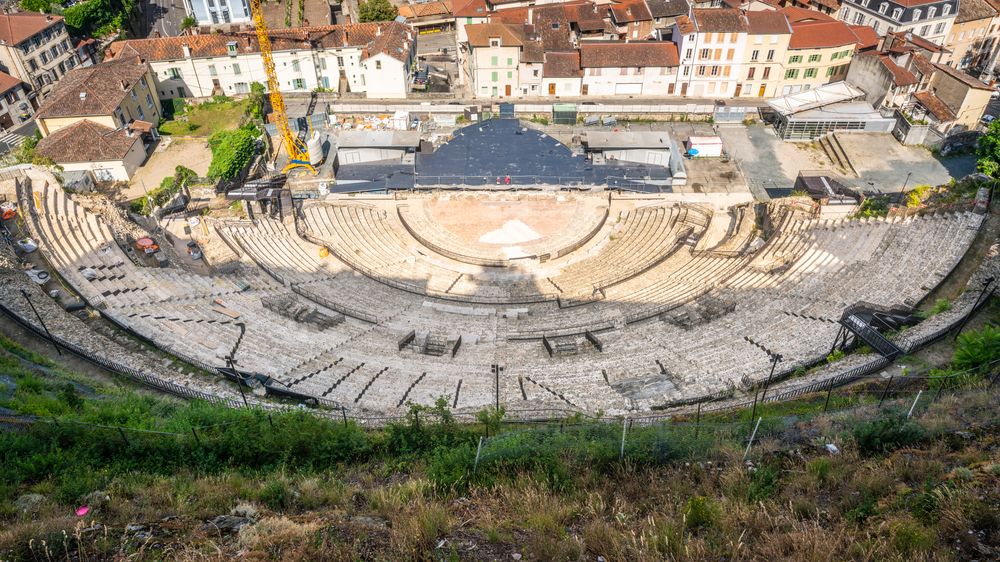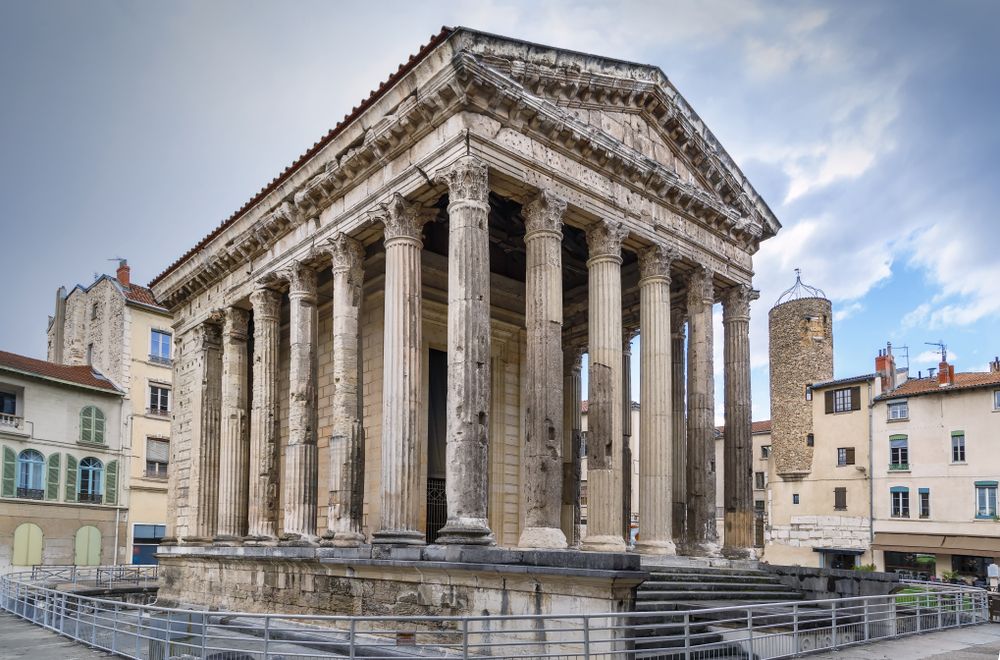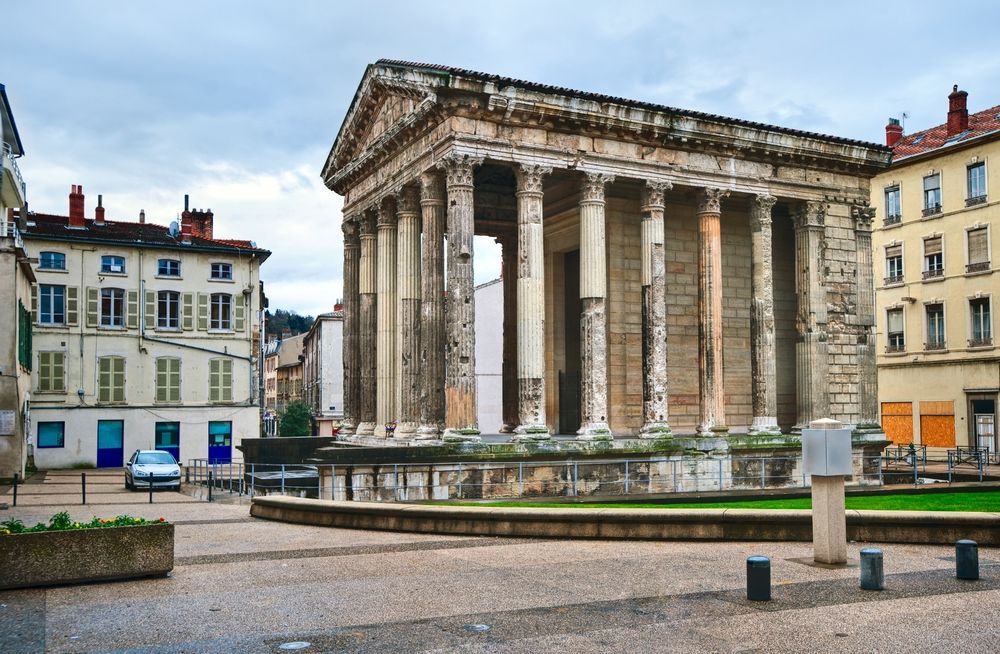[ad_1]
The Temple of Augustus and Livia is among the greatest preserved Roman temples nonetheless standing right now – it’s not to be confused with the beautifully preserved Maison Carrée Roman temple in the Southern city of Nimes. It’s an historic Roman temple constructed in the beginning of the first century in the midst of the previous Roman metropolis of Vienne.
Different historic Roman temples still standing today are the Parthenon in Rome (which survived by being transformed right into a Catholic Church) and the Garni temple, rebuilt in Armenia on the far periphery of the ancient empire.
Vienne metropolis on banks of Rhone river
What To Know About The Temple Of Augustus & Livia: One Of The Oldest & Finest Preserved Roman Temples Nonetheless Standing
The Temple of Augustus and Livia is among the best-preserved Roman temples on the planet. The Temple of Augustus and Livia was devoted to the imperial cult – to Emperor Augustus and his third spouse Livia. The imperial cult was an essential a part of Roman faith for a whole lot of years.
- Constructed: Oldest Components 20-10 BC – Different Components 1st Century AD
The temple was first constructed round 20-10 BC throughout the early years of the Roman Empire (after the Roman Republic). That a part of Gaul had solely been included into Rome round 37 years earlier by Julius Caesar in 47 BC.
A lot of the temple belongs to a later interval, and solely the rear a part of the temple is definitely thought to have been constructed throughout Augustus’ reign. The architectural fashion of the capitals and cornice would counsel a lot of the temple dates from round 40 AD. The temple was constructed on a raised podium with Roman Corinthian ornament.
Gallo-Roman theatre of Vienne
Temple Of Augustus & Livia Historical past: From Pagan Temple To Church To Temple Of Cause To Museum
As Christianity swept over the traditional Roman Empire, pagan locations of worship got here in peril. Numerous pagan statues have been defaced, shrines have been destroyed, and historic temples have been toppled. They have been then quarried for his or her stone over the centuries. Among the pagan temples managed to outlive by changing into Christian church buildings as an alternative (the Parthenon of the Acropolis of Athens was converted to both a Christian Church and an Islamic Mosque).
Because the Roman Empire grew to become Christian, the Temple of Augustus and Livia was transformed into the parish church of Sainte-Marie-la-Vieille after which as Nortre Dame-de-la-Vie (Notre Dame or Our Girl is a typical identify for French church buildings and to not be confused with the famous Notre Dame of Paris, which is set to re-open soon).
With the French Revolution, the nation turned in opposition to faith, and for a time, the church buildings have been closed. The previous Roman temple grew to become the temple of Cause in 1792. However that did not final lengthy, and later it was used because the business court docket of the town after which a museum and the library of Vienne.
At present, the Temple of Augustus and Livia has been lovingly restored to look very similar to what it may have been at a Roman temple. That being stated, restorations of historic structure are likely to solely go thus far, and they’re sometimes not repainted as they might have been in historic occasions.
Temple of Augustus and Livia Roman temple
What To Know About Visiting The Temple Of Augustus And Livia At present
The Temple of Augustus and Livia is among the main attractions in the modern city of Vienne, simply south of the most important French metropolis of Lyon. Guests can sense the previous glory of the temple and ponder the Gallo-Roman metropolis. Go throughout the night time, and see the temple lit up from beneath.
Whereas the temple should still stand right now, guests want to make use of their creativeness to reconstruct the traditional Roman discussion board wherein it stood. This was the executive heart of the traditional Gallo-Roman metropolis of Vienne. The temple is positioned within the coronary heart of the previous metropolis and is free to go to.
There may be parking solely a 4-minute stroll from Parking Saint Marcel. Utilizing public transportation, the closest bus stops are Temple de Cybele and Jue de Paume. Vienne can also be solely a 30-minute drive out of Lyon, making it an excellent tour whereas visiting that magnificent French metropolis.
Roman temple of Augustus in Vienne
There are extra historic Roman ruins to be present in Vienne. Guests can see the stays of the previous Roman theater, elements of historic aqueducts, the traces of Roman roads, and the vestiges of a temple to Cybele, solely rediscovered in 1945 with the development of a brand new hospital. However essentially the most notable Roman attraction in Vienne is the Plan de I’Aiguille or the Pyramide (it was related to the traditional Roman circus of the town). France is among the greatest locations to see historic Roman ruins.
Put up-Roman sights embody the early Romanesque church of Saint Peter, the previous Gothic cathedral of St Maurie, and the Romanesque church of st Andre en Bas.
[ad_2]
Source link






Recent Comments